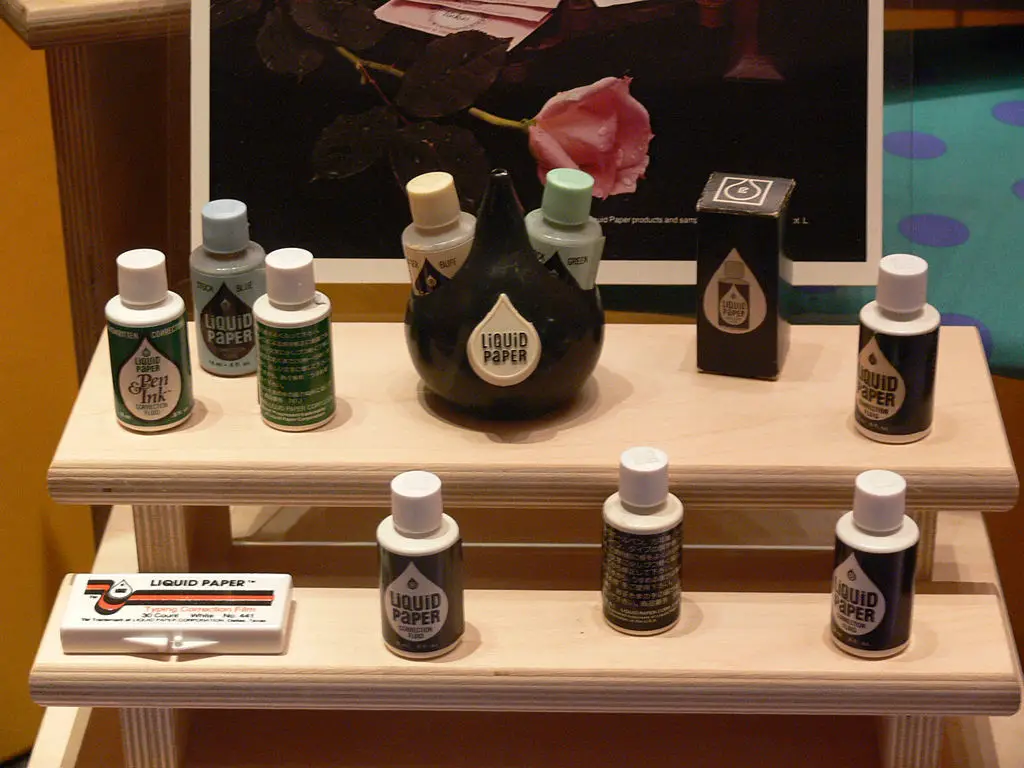Liquid Paper is the magical stuff that can cover mistakes, but if it weren’t for one woman and her difficulty using an electric typewriter, it might never have been invented.
In 1951, Bette Nesmith Graham, the inventor of Liquid paper, was a single mother with one young son who worked as an executive secretary at Texas Bank & Trust in Dallas, Texas. Problems arose for her as a secretary when the bank switched from mechanical typewriters to electric ones. Nesmith found that she had difficulty correcting her mistakes on the new machines as the new type of ink from the ribbons didn’t erase well. She came up with an idea to paint over her mistakes instead.
She mixed a water-based, white tempera paint (which is a fast-drying painting medium) at home and used a brush to paint over her mistakes at the office. She discovered that when the paint dried, she could type over it. Other secretaries got wind of Graham’s concoction and began asking her for some of their own. She began to share the corrective paint and named it Mistake Out.
At this point, Graham must have realized she had something special because she began to refine her mixture in her kitchen using a blender. In 1956, she sold her first real bottle of Mistake Out. She next enlisted the help of a chemistry teacher, a paint manufacturing employee, and an office supply dealer to further refine the product.
Graham got a patent on her product and renamed it Liquid Paper. But it still wasn’t enough to pay all the bills, and Graham and her son continued to produce it in their garage. A big break for Graham came in 1958 when a trade magazine mentioned her new corrective paint, Liquid Paper, in their publication. She soon had an order for 500 bottles. But Graham still had to work at her job at the Texas Bank & Trust to make ends meet.
One day while working at the bank, and through a simple twist of fate, Graham accidentally put her new company’s name on some paperwork instead of the bank’s name. She got fired for the gaffe but devoted her newfound time to her invention. By 1964, she was producing 5,000 bottles a week. Only four years later, her company moved into its own factory based in Dallas and was producing 10,000 bottles a day.
In 1979, Graham sold Liquid Paper to the Gillette Corporation for $48 million. Unfortunately, she died only a few months later in 1980 at the age of 56, and she left half of her fortune to her son, Michael Nesmith. Some of you may recognize the name Michael Nesmith. He already had a claim to fame that was independent of anything to do with Liquid Paper. He was one of the members of The Monkees, the popular pop-rock band of the late 60s and early 70s who also had their own television show.
Sources: Liquid Paper, Celebrating Texas, Famous Woman Inventors, About, Mirror UK
Learn about these other inventions
The Invention of the Chocolate Chip Cookie
The Observation That Inspired the Invention of Velcro
The World’s First Contact Lenses
The World’s First Highway Centerline
The World’s First Barcode
The Amazing History of Vaseline (aka Petroleum Jelly)


